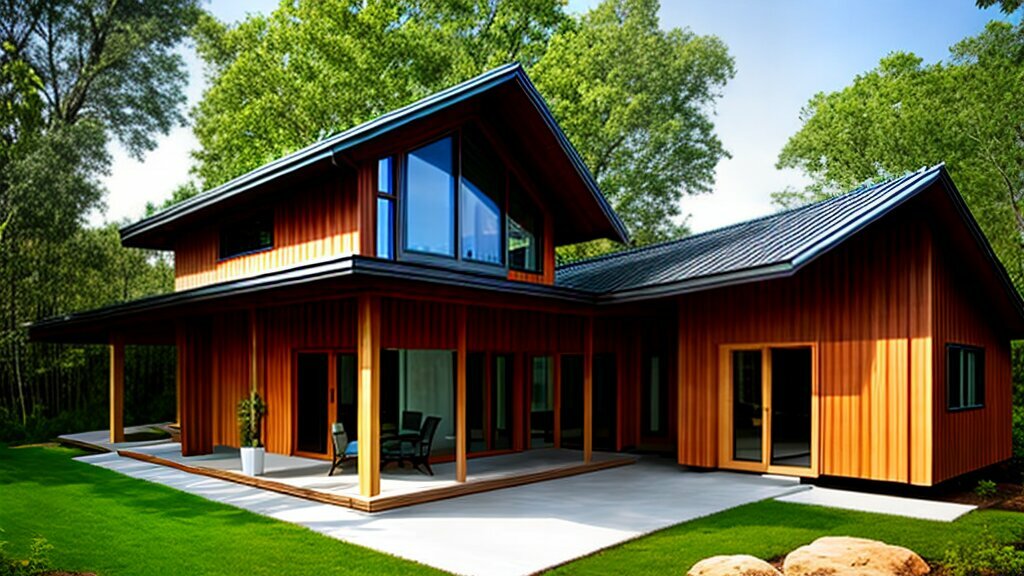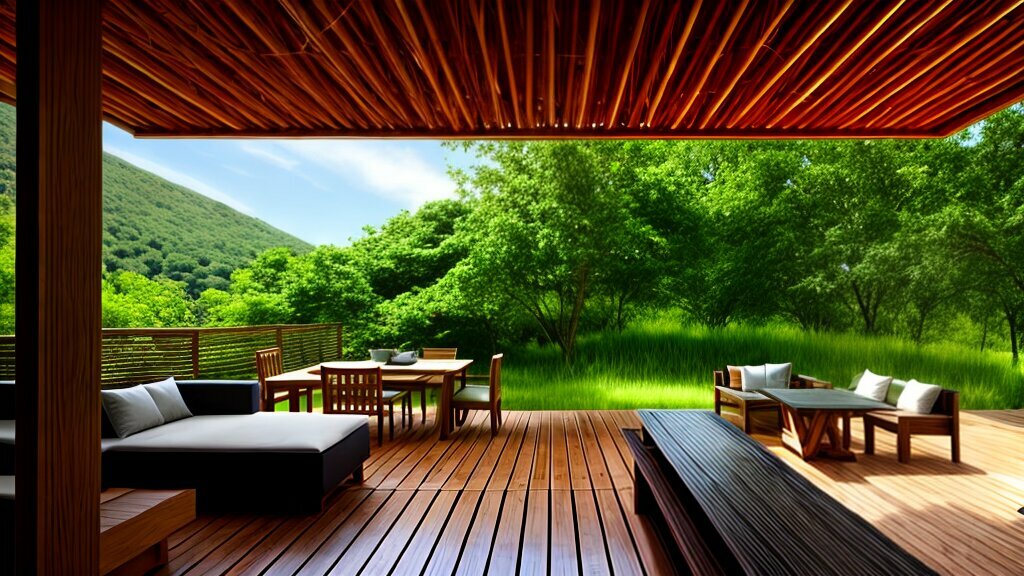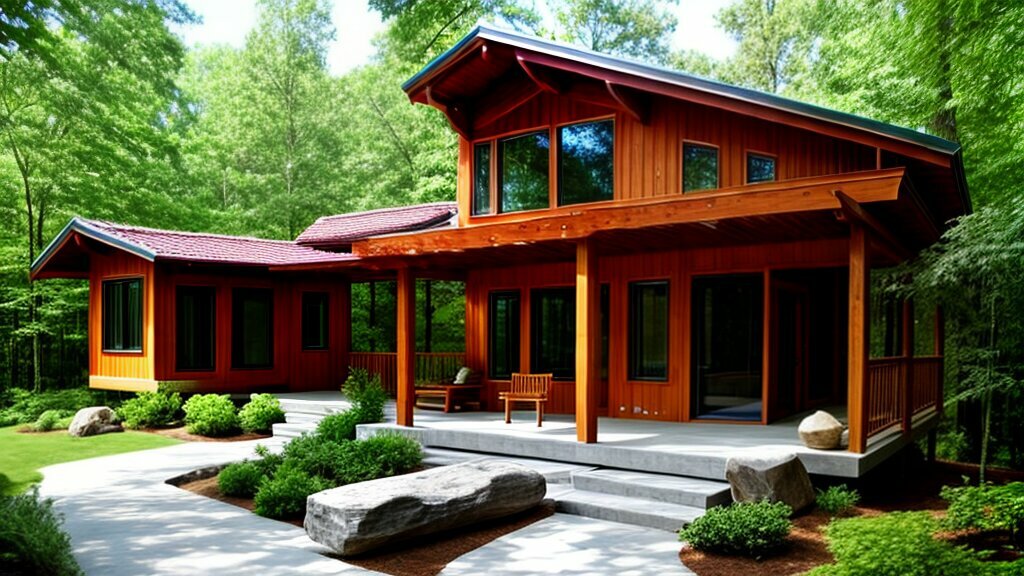Welcome to our article on Building with Nature, an approach to sustainable construction that embraces nature-inspired architecture and eco-friendly building practices. In this article, we will explore how indigenous architectural practices prioritize sustainability and the use of natural building materials. We will also discuss the significance of green infrastructure and biodiversity-friendly construction in Building with Nature.
Building with Nature is more than just a construction concept; it is a way of life. It involves designing and constructing buildings that coexist with nature while also utilizing natural resources to reduce environmental impact. By incorporating eco-friendly building practices, Building with Nature aims to create a healthier and more sustainable future.
Key Takeaways:
- Building with Nature aims to create sustainable and eco-friendly buildings through nature-inspired architecture and green building practices.
- Indigenous architectural practices prioritize sustainability and the use of natural building materials in their designs.
- Green infrastructure and biodiversity-friendly construction play a crucial role in Building with Nature by promoting the preservation of biodiversity and contributing to a healthier environment.
The Concept of Building with Nature
Building with Nature is a concept that reflects the importance of sustainable construction, nature-inspired architecture and green building practices. Biophilic design is a significant element of Building with Nature, which focuses on creating environmentally friendly buildings that promote positive interactions between people and nature.
Nature-inspired architecture is an essential component of Building with Nature and encompasses the use of natural building materials and other sustainable design strategies. This approach of Building with Nature is a direct response to the negative impact conventional construction and building practices have on the environment.
The Role of Biophilic Design in Building with Nature
Biophilic design refers to the incorporation of natural elements and patterns in the design of buildings and structures. It involves creating an environment that evokes the natural world, leading to better health and emotional well-being. By integrating biophilic design into Building with Nature, architects build structures that are in harmony with the local environment and its natural systems.
Biophilic design features such as green roofs and walls that use living plants to provide insulation and cooling, leading to reduced energy usage. Another example of Biophilic design is the use of daylighting to illuminate interior spaces, reducing the need for artificial light and saving on energy costs.
By incorporating biophilic design, Building with Nature can help create a better future for our planet, one that is more sustainable and ecologically balanced.

Indigenous Architectural Practices and Sustainability
Indigenous architectural practices embrace sustainability and eco-friendliness as key components in creating buildings that cater to the needs of both humans and the environment. These practices prioritise the use of natural building materials to reduce the carbon footprint of the construction process.
Indigenous architecture often focuses on the use of locally-sourced, renewable and biodegradable materials such as bamboo, wood, adobe, and straw bale. These natural materials are an excellent alternative to traditional building materials like cement and steel as they have a lower environmental impact and a reduced embodied energy.
The construction techniques adopted by indigenous communities are also environmentally conscious. These techniques rely on traditional knowledge, passed down through generations, and involve minimal machinery and equipment, reducing the amount of energy required to construct a building.

Building with Nature involves promoting biodiversity and preserving the environment. Indigenous communities have long recognized the importance of preserving the natural environment and have incorporated elements of nature into their designs. This has led to the development of biophilic design, which seeks to create buildings that are inspired by nature and incorporate natural elements such as green roofs, vertical gardens, and living walls.
Indigenous practices also emphasise green infrastructure and biodiversity-friendly construction, promoting the preservation of ecosystems and a healthier environment. The integration of green infrastructure into buildings helps to mitigate the effects of climate change and provide essential ecosystem services such as water filtration, air purification, and carbon sequestration.
Overall, building sustainably with indigenous architectural practices is an eco-friendly solution to the challenges of modern construction. It promotes the use of natural materials, environmentally conscious construction techniques, and the incorporation of elements of nature, providing a viable path towards sustainability in the future.
Green Infrastructure and Biodiversity-Friendly Construction
Building with Nature not only focuses on sustainable construction and eco-friendly buildings but also emphasizes the importance of incorporating green infrastructure and biodiversity-friendly construction practices. The integration of these practices into the construction process can greatly contribute to creating structures that promote the preservation of biodiversity and contribute to a healthier environment.
Green infrastructure refers to the interconnected network of natural and cultural features and green spaces. It includes parks, trees, wetlands, green roofs, and walls, among other elements. These features can help mitigate environmental degradation, such as air and water pollution, while also providing other benefits such as reducing the urban heat island effect.
| Benefits of Green Infrastructure: |
|
| Provides habitat for wildlife and increases biodiversity |
 |
| Reduces stormwater runoff and flooding |
|
| Improves air and water quality |
|
| Reduces energy consumption and lowers greenhouse gas emissions |
|
| Enhances community well-being and provides recreational opportunities |
|
Biodiversity-friendly construction, also known as wildlife-friendly construction, aims to create structures that support and protect wildlife. This approach considers the needs of different species and ecosystems in the construction process, such as providing nesting sites, creating green roofs and walls, and incorporating natural materials such as wood and stone.
“The integration of green infrastructure and biodiversity-friendly construction practices is crucial for creating structures that are not only sustainable but also contribute to the protection and preservation of our natural environment.”
By embracing Building with Nature and incorporating green infrastructure and biodiversity-friendly construction practices, we can create sustainable structures that contribute to a better and healthier future for all.
Conclusion: Embracing Building with Nature for a Sustainable Future
Building with Nature is not just a trend, but a fundamental shift in architectural practices towards sustainability. It integrates environmentally conscious construction, nature-inspired architecture, and green building practices to create structures that are not only aesthetically pleasing but also eco-friendly.
By following the principles of Building with Nature, we can create buildings that not only reduce their environmental impact but also contribute to the preservation of biodiversity. These buildings can also improve the quality of life of their inhabitants by promoting well-being and fostering a stronger connection with nature.
The use of natural building materials, the incorporation of green infrastructure, and the promotion of biodiversity-friendly construction are all essential elements of Building with Nature. Indigenous architectural practices have been using these techniques for centuries, proving that it is possible to build sustainably without sacrificing aesthetics or functionality.
In Conclusion
We must embrace Building with Nature and its underlying principles to create a sustainable future for our planet. By incorporating eco-friendly practices into our architectural designs, we can reduce our impact on the environment and potentially reverse the damage that has already been done.
Let us work towards a future where buildings are not just structures, but living, breathing entities that coexist with nature and promote the preservation of our planet’s biodiversity.
FAQ
Q: What is Building with Nature?
A: Building with Nature is a concept that integrates sustainable construction, nature-inspired architecture, and green building practices. It emphasizes the use of natural building materials and the incorporation of biophilic design to create eco-friendly buildings.
Q: How do indigenous architectural practices embrace sustainability?
A: Indigenous architectural practices embrace sustainability by adopting environmentally conscious construction techniques and utilizing natural building materials. These practices prioritize the preservation of nature and contribute to the concept of Building with Nature.
Q: What is the role of green infrastructure in Building with Nature?
A: Green infrastructure plays a significant role in Building with Nature. It involves the incorporation of natural elements such as green roofs, rain gardens, and sustainable drainage systems to promote a healthier environment and contribute to sustainable construction.
Q: How does biodiversity-friendly construction contribute to Building with Nature?
A: Biodiversity-friendly construction is an important aspect of Building with Nature. It focuses on creating structures that support and preserve biodiversity. By incorporating features such as habitat restoration and wildlife-friendly design, it contributes to the overall sustainability of the built environment.
Q: Why is embracing Building with Nature important for a sustainable future?
A: Embracing Building with Nature is crucial for a sustainable future because it promotes the use of eco-friendly buildings and green building practices. By integrating nature-inspired architectural practices and incorporating sustainable construction principles, we can create a built environment that is in harmony with nature and supports a healthier planet.





















Post comments (0)